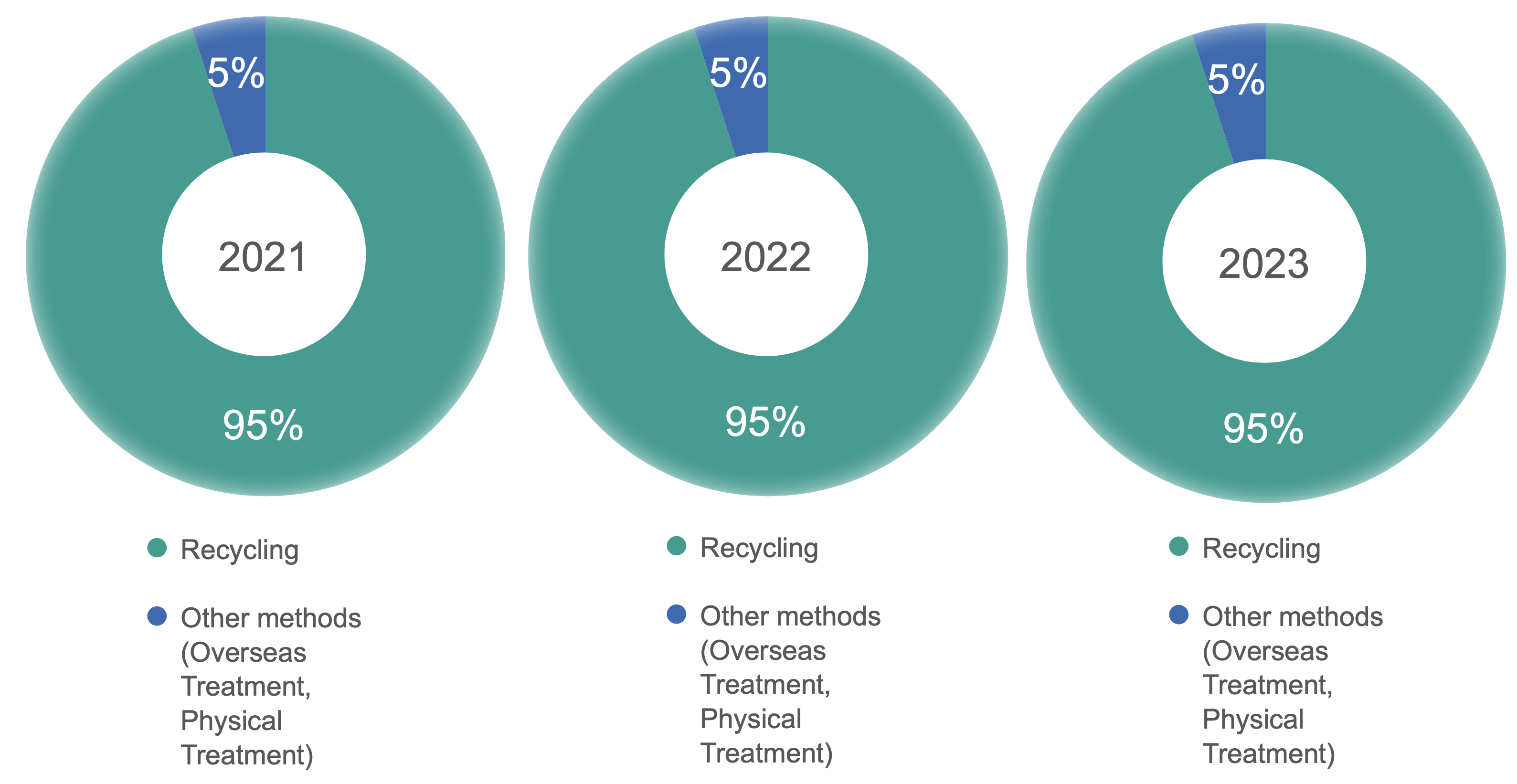- About
- Applications
- Products
- Quality
- Careers
- Investors
- ESG
- Contact
Home / ESG / Waste Management
RichWave's operating locations do not engage in production so the waste generated consists of mainly office waste. Electronic wastes mainly come from laboratory tests and product samples preserved for QA purposes; these include hazardous wastes such as electronic scraps and defective products. RichWave has established a dedicated waste management unit in charge of hazardous waste declaration and disposal. It is also responsible for monitoring waste disposal to make sure that the process complies with the government's environmental policies and regulations to carry through proper disposal and reduction of waste. Starting in 2023, we plan to set a 3% reduction target over the next 5 years as the goal for our waste management policy.
To materialize responsible production and mitigate our operating wastes' potential environmental impact, RichWave has implemented the following waste management strategies in various stages.
Waste Management Target

In 2023, RichWave's waste emissions were12.4667 tonnes, with a waste intensity of 0.0042 tonnes per NTD million revenue, of which general business waste is the main source, accounting for 95.8% of the total waste, and incineration is the main method of processing; the rest is hazardous business waste, which mainly consists of scrapped products and electronic waste, weighing 0.5290 tonnes in 2023, accounting for about 4.2% of the total waste, about 95% of which was recycled, of which 9.36% was recycled into the various stages of the product life cycle to achieve resource recycling and reuse. Waste emissions in 2023 decreased by 39.35% compared to 2022, mainly due to the change in the general business waste statistics Note 1 and the continuous promotion of waste processing as a resource. In terms of policy or future planning for recycled materials, RichWave's current recycled materials are mainly packaging materials related to products and IC scraps and defective products, with a total recycling volume of 2.89 metric tons in 2023, which was delivered to qualified and professional waste processing vendors for recycling and reuse, and in the future, RichWave will proactively plan and expand the diversification of the use of recycled materials in order to achieve the goal of a circular economy and to enhance the efficiency of resource utilization.
RichWave's Electronic Wastes Generated over the Last 3 Years
 Note:
Note:
- The estimation method for general waste in 2023 at the Hsinchu branch involves measuring the daily general waste production per person, extrapolated to estimate the company-wide daily general waste production per person.
- The hazardous business waste consists of electronic scraps and defective products.
Hazardous Waste Processing Methods from 2021 to 2023

Lost your password? Please enter your email address. You will receive a link to create a new password.





